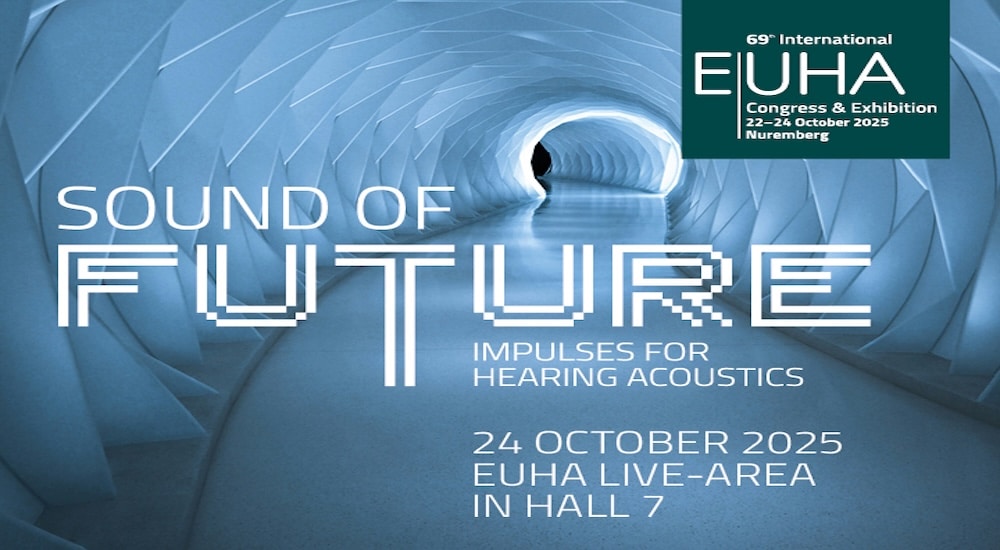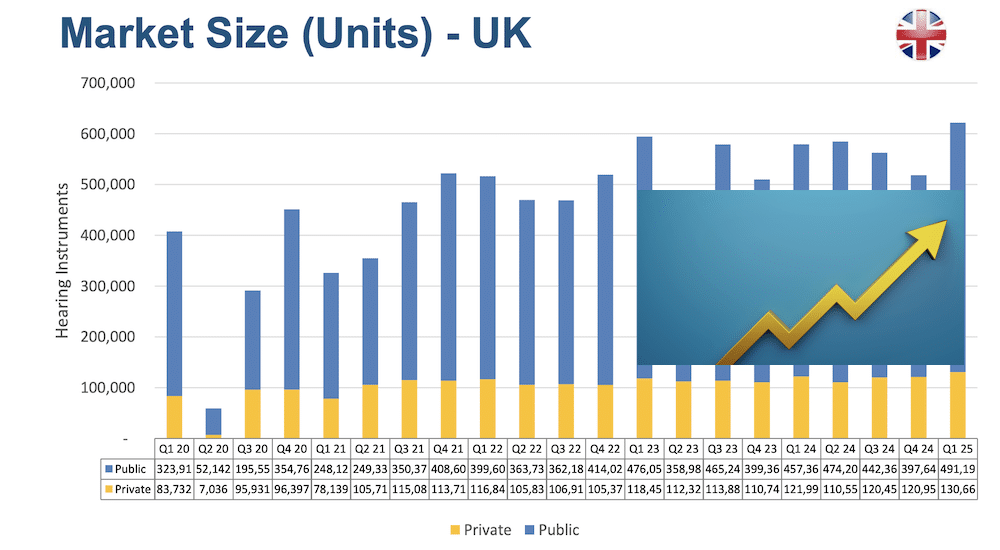How is hearing technology helping people to persevere with hearing instruments?
technology
The British Irish Hearing Instrument Manufacturers Association (BIHIMA) interviewed Eva Lilja Nilsson, Senior Product Education Specialist at Widex, WS Audiology, to find out how hearing technology is helping people adapt to and keep wearing hearing instruments.

"People only remember 20% of the information they’re given in the clinic."
BIHIMA: We know not enough wearers persevere with hearing instruments, what do you see as the main reasons for this?
Eva Lilja Nilsson (ELN): There are so many new things to learn and to understand and accept when wearing a hearing instrument. It can take an average of three to six months before the hearing part of the brain starts to accept a hearing instrument, as parts of the brain need to be ‘reawakened’; this is the adaptation period. There’s a lot to remember when you’re fitted with a hearing instrument and, as a rule, people only remember 20% of the information they’re given in the clinic, this is the same across all sectors, not just audiology. This can be even harder if you’re completely new to wearing hearing instruments but the benefits of wearing them mean they’re worth persevering with.
Apps as support
BIHIMA: What do you think are the key developments in hearing technology that address this issue?
ELN: The development of apps and that the hearing technology industry can work with apps has been a major development. In the past, hearing care professionals (HCPs) and audiologists would meet with the person needing a hearing instrument, go through what they needed to know and could send brochures for the consumer to refer to when at home. Some people would forget to take the brochure home and it’s hard to remember all the information.
Apps can now be used to support people to wear hearing instruments. Most of us are used to using apps and have our phones beside us all the time – we expect to be connected to everything, so the use of apps to support wearers of hearing instruments has come as a natural shift. Technology has also developed so hearing instruments are smaller than they used to be and look cooler. They’re wireless, rechargeable, can be connected to people’s phones – they’re more interesting to use. Manufacturers are adapting to the world as it changes, adapting to what people want as well as what they need.
BIHIMA: How does the Widex “My Guide” app support more users to wear instruments?
ELN: My Guide is a feature of our MOMENT app: an app within a bigger app. My Guide supports people to wear their hearing instruments, to address any challenges while they get used to new sounds and learn when to use and not to use them. In the app there are videos and instructions, troubleshooting, courses where people can learn about hearing loss and how hearing instruments work. People can also set reminders for themselves that pop up on their phone, such as a reminder to put on the hearing instruments until people develop the habit of doing this naturally. The My Guide app supports people through the adaptation period while they’re getting used to wearing a hearing instrument and helps them see the benefit of hearing instruments and to feel more confident using them.
The hearing care professional is the all-seeing guide
BIHIMA: How can the Widex “My Guide” app help audiologists to support hearing instrument wearers?
ELN: The most important person a hearing instrument user will meet is their HCP or audiologist. The My Guide app in no way replaces this relationship but helps audiologists to support their patients even when they’re not with them. The app can be with the user 24/7. Audiologists can have peace of mind knowing their patients have easily accessible help. It saves time in the clinic – frees up audiologists’ time to see people who really need face to face support. The HCP can see what their patient has used the app for on a remote database, so if they needed any little tweaks to help them in the moment the HCP will see this. This is an important feature of the app – its transparency – there is nothing happening behind the scenes that HCPs can’t see.
BIHIMA: Do you think the COVID-19 pandemic had an impact on the number of people wearing hearing instruments and persevering with them?
ELN: Yes, I think it has. A lot of clinics weren’t open initially and people couldn’t travel so were unable to see their HCP. Clinics adapted quickly and offered remote support, which was great, but some people still found it hard to access. I think perhaps some people didn’t put their hearing as a priority and thought it would be okay to wait for a year or two to treat their hearing loss. But hearing instruments aren’t luxury products, they help people live the life they want and communicate and connect with others, and they can help delay the onset of dementia. I would say the pandemic has definitely presented challenges in hearing care, as it has in many sectors of healthcare.
Cool is the future
BIHIMA: How do you see hearing technology developing in the future to support even more people to persevere with hearing instruments?
ELN: I see technology developing to create hearing instruments that look even cooler. That social media will be used as a platform where even more people talk about wearing hearing instruments, reducing the stigma. Apps will be able to do even more, and technology will develop that allows people to access hearing instruments more easily.
BIHIMA: Any final thoughts?
ELN: Using hearing instruments is so important for people who have hearing loss. They help people communicate and connect with each other, reducing isolation and loneliness, and, if people start wearing them early enough, they can reduce the risk of develop dementia or delay its onset. Using hearing instruments may take a little getting used to, but technology is advancing to support users.
About BIHIMA:
BIHIMA represents the hearing instrument manufacturers of Britain and Ireland, working in partnership with other professional, trade, regulatory and consumer organisations within the health care and charitable sectors. We raise consumer awareness about the latest hearing technology and aim to influence government and policy makers to improve the lives of people with hearing difficulties.




